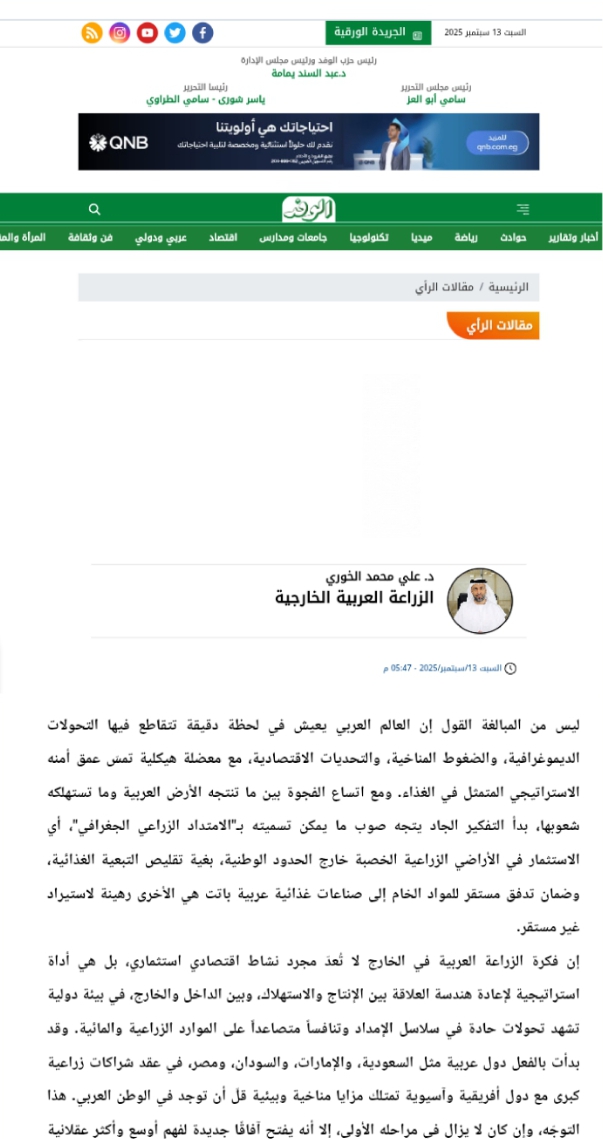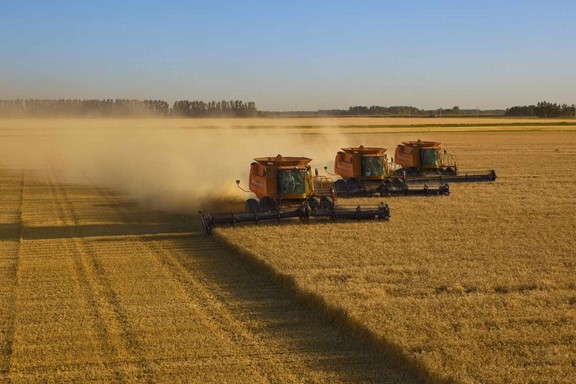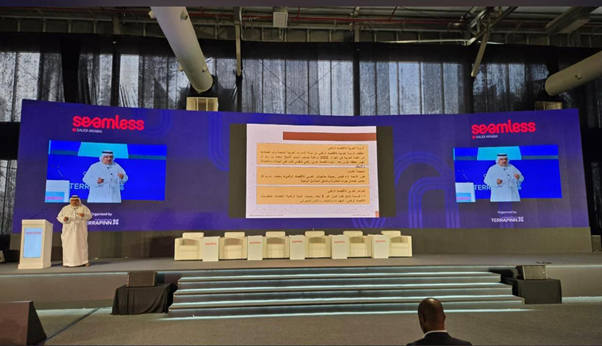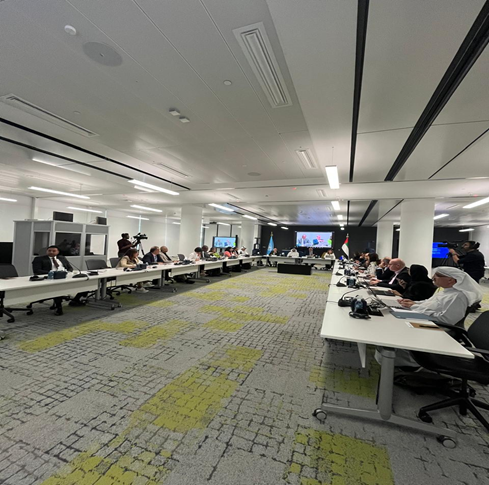Cairo
Source: Al-Wafd Newspaper
Prof. Dr. Ali Mohammed Al-Khouri
It is no exaggeration to say that the Arab world is experiencing a critical moment, one in which demographic shifts, climate pressures, and economic challenges intersect with a structural dilemma that deeply affects its strategic food security. With the widening gap between what Arab land produces and what its people consume, serious consideration has begun to shift toward what might be termed “geographic agricultural expansion,” i.e., investment in fertile agricultural lands beyond national borders. This aims to reduce food dependency and ensure a stable flow of raw materials to Arab food industries, which have themselves become hostage to unstable imports.
The concept of Arab agriculture abroad is not merely an economic investment activity; it is a strategic tool for reengineering the relationship between production and consumption, and between domestic and foreign markets, in an international environment witnessing sharp shifts in supply chains and escalating competition over agricultural and water resources. Arab countries such as Saudi Arabia, the UAE, Sudan, and Egypt have already begun to forge major agricultural partnerships with African and Asian countries that possess climatic and environmental advantages rarely found in the Arab world. Although still in its early stages, this trend opens new horizons for a broader and more rational understanding of the concept of self-sufficiency.
These external projects can provide stable supplies of grains, legumes, vegetable oils, and sugar, which constitute the basic components of the Arab food basket. If managed effectively, these crops not only serve to bridge the food gap but also provide vital raw materials for the food industry, from milling, refining, and freezing to packaging and distribution. They also provide broader options for diversifying production sources, rather than relying solely on the international market or local production, which is limited by its water and land resources.
What makes this strategy noteworthy is that it is not solely based on crops, but also incorporates a knowledge and technical dimension. Through these projects, Arab countries are entering into direct contact with more advanced agricultural systems, paving the way for the transfer of modern agricultural technology, the development of irrigation and fertilization methods, and land and resource management. This benefits local agriculture, which has historically suffered from low productivity and a lack of innovation.
However, in contrast to these promising potentials, a number of complex challenges stand in the way of achieving full self-sufficiency through this model. Establishing successful agricultural projects abroad requires significant capital, not only for purchasing or leasing land, but also for building the necessary infrastructure such as irrigation networks, storage facilities, transportation systems, and integrated departments capable of managing risks and logistical control. Furthermore, operating in foreign lands exposes Arab investors to significant political and legal risks, including changes in national policies, the outbreak of local conflicts, or weak governance systems in some host countries.
A central logistical issue also arises: how to transport agricultural products efficiently and affordably from production areas to consumption and industrial centers in the Arab world. Without a sophisticated logistical infrastructure and reliable supply chains, outdoor farming becomes more of a burden than a solution.
No less important are the challenges related to Arab coordination itself. The success of this model requires a collective vision that transcends national considerations and establishes common investment policies, unified agricultural information systems, regional financing bodies, and mechanisms for sharing risks and returns. Without this vision, Arab projects abroad will remain isolated endeavors, unable to bring about the required structural transformation in Arab food security.
On the other hand, external agriculture cannot be viewed as the only alternative. Food industries in the Arab world rely on a wide range of raw materials, many of which cannot be produced abroad with the required efficiency. Moreover, global markets impose strict quality standards, meaning that foreign products must be competitive not only in terms of quantity, but also in terms of quality and sustainability.
In light of the above, talk of complete self-sufficiency through agriculture abroad appears unrealistic. Rather, what can be sought is a high degree of smart food security—a balanced mix of foreign and domestic production, supported by smart policies to manage demand, reduce waste, and increase consumption efficiency.
Perhaps one of the most exciting aspects of this model is its ability to redefine the concept of “food sovereignty” from a more pragmatic perspective. Sovereignty no longer implies confinement within national borders, but rather the possession of the tools to influence and control transnational production flows through capital, technology, knowledge, and strategic alliances. This perspective places agriculture abroad within a broader framework of geo-economic vision that links food security, foreign policy, sovereign investment, and regional integration.
Ultimately, the importance of Arab agriculture abroad is not measured solely by its ability to satisfy the local market, but rather by its ability to open a new horizon for Arab thinking, one that transcends immediate reactions and embraces strategies that treat food as a sovereign right and a tool for economic independence. From this perspective, the Arab world’s food future is being written not only in the plains of the interior, but also in distant lands, irrigated by Arab capital, managed with a strategic mindset, and harvested as a project for both renaissance and sovereignty.












